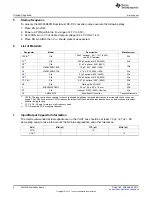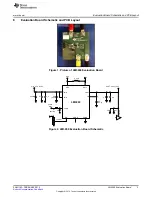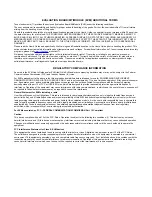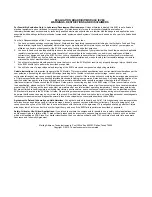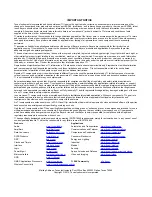
Startup Sequence
www.ti.com
5
Startup Sequence
To activate the LM3269EVM Buck-Boost DC-DC converter output, execute the following steps:
1. Place EN pin LOW.
2. Power up PVIN (within the P
VIN
range of 2.7V to 5.5V).
3. Set VCON pin to 1/3 of desired output voltage (0.2
≤
VCON
≤
1.4V).
4. Place EN pin HIGH, then V
OUT
should present as expected.
6
List of Materials
Designator
Model
Description
Manufacturer
100
μ
F, optional , 6.3V, 1411 (3528)
CPVIN
(1)
Std
Std
Low ESR Tantalum
C1
(2)
Std
220 pF, optional, 01005 (0402)
Std
C2
(2)
Std
0.1
μ
F, optional, 0201 (0603)
TDK
C3
C1608X5R0J106K
10
μ
F, 6.3V, 0603 (1608)
C4
C1608X5R0J475K
4.7
μ
F, 6.3V, 0603 (1608)
Std
C5
(2)
Std
0.1
μ
F, optional, 0201 (0603)
Std
C6
(2)
Std
220 pF, optional, 01005 (0402)
Std
C7, C8
(3)
Std
0.47
μ
F, optional, 0201 (0603)
Std
C9
Std
Optional, 0402 (1005)
Std
L
MIPSZ2520D2R2
2.2
μ
H, 2.5 x 2.0 x 1.0 mm
FDK
R1
Std
Optional, 01005 (0402), Shorted
Std
U1
LM3269TLE
Buck-Boost Converter
Texas Instruments
(1)
CPVIN: The long test leads necessary for bench testing add significant parasitic inductances in series with the bench power
supply. The 100
μ
F capacitor at CPVIN reduces the impact that these parasitic inductances have on both static and transient
behavior during testing.
(2)
C1, C2, C5, C6 help to improve high frequency noise.
(3)
C7, C8 resemble PA decoupling capacitor.
7
Input/Output Capacitor Information
The total recommended actual capacitance on the VOUT bus should be at least 7.0
μ
F (4.7
μ
F + PA
decoupling caps) to take into account the DC bias degradation and other tolerances.
BUS
MIN (µF)
TYP (µF)
MAX (µF)
PVIN
–
10
–
VOUT
7
–
10
2
LM3269 Evaluation Board
SNVU162 – FEBRUARY 2013
Submit Documentation Feedback
Copyright © 2013, Texas Instruments Incorporated


